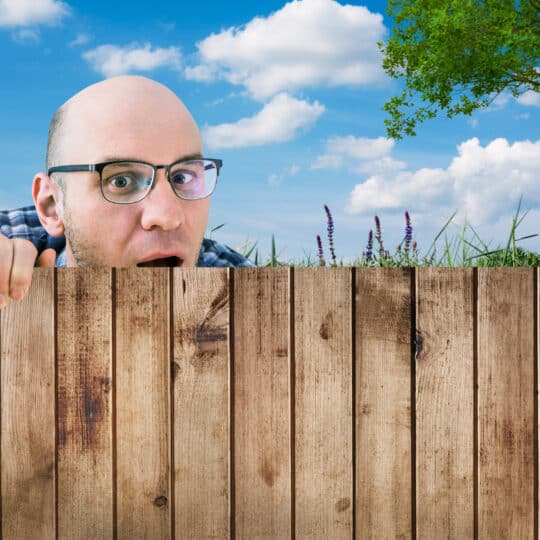Talking with Your Neighbor about Tree Care
Plus Additional Action When Talking Doesn’t Work
Posted
August 17, 2023

Once you’ve determined who’s liable for the tree, and that the issue shouldn’t be ignored, now it’s time to be neighborly. Here are some tips for talking with your neighbor about tree care.
Talking with Your Neighbor about Tree Care
If there’s a hazardous tree partially on or close to your property, you have the right to be concerned. However, if part of the tree is also on someone else’s property, you don’t have the right to do anything until you get your neighbor’s consent.
Hopefully you’re on good terms with your neighbor and this process can go smoothly. If that’s not the case, there’s still a way to help ensure the tree is dealt with properly. Whether the tree is on the property line or fully in the neighbor’s yard, there are several things you can do to get the ball rolling:
Assess the Situation
If it’s a few broken branches or excess leaves in your lawn, determine if it’s worth bringing up. If you suspect the tree is dying and it’s looking like your home or property could be affected if it falls, talk to your neighbor face-to-face about the problem. Explain your concerns and even recommend pruning the section that crosses the property line. For larger projects, come prepared with the names of a few companies in the area that can help.
The key is to have a discussion with your neighbor. If you do anything to the tree without their prior knowledge, they have the right to take legal action if something happens to the tree or their property.
Request a Tree Inspection
After the initial discussion, both you and your neighbor can contact local certified companies to assess the tree. You both should obtain a copy of any report regarding a plan for pruning or tree removal. If a professional recommends work done on the tree and your neighbor agrees, you can breathe a sigh of relief.
While you’re not responsible to pay for any work, it would be neighborly to offer a contribution, especially if your property would be impacted.
However, if your neighbor refuses to follow through with any professional recommendations, there are additional steps you can take.
Taking Additional Action
Once you’ve voiced your concerns about the tree and obtained written confirmation from a professional that they recommend work be done, you have enough evidence to take legal action if necessary. Compile these concerns and evidence into a written letter or email and send it to your neighbor as a final plea. Include any plans you have of taking legal action if the tree ends up damaging your property. Save a copy of this letter for your records.
If your neighbor still doesn’t act, and your concern continues to grow, consult with a lawyer about your rights and how you can protect yourself and your property. You may be able to file a nuisance claim if the tree interferes with the use and enjoyment of your property.
Once the Tree Falls
After all of this, if the tree in question happens to fall on your property, document the damage in detail. Add this evidence to your growing tree complaint file and use it to back you up when holding the neighbor accountable. Then contact your homeowners insurance company to discuss next steps.
Be a Good Tree Care Neighbor
Hopefully, this process is resolved before it gets law enforcement involved. If not, hopefully it shows how important it is to be a good neighbor and properly take care of your trees and property. Keep up with your own tree maintenance by pruning regularly and enlisting a professional tree care company when needed.